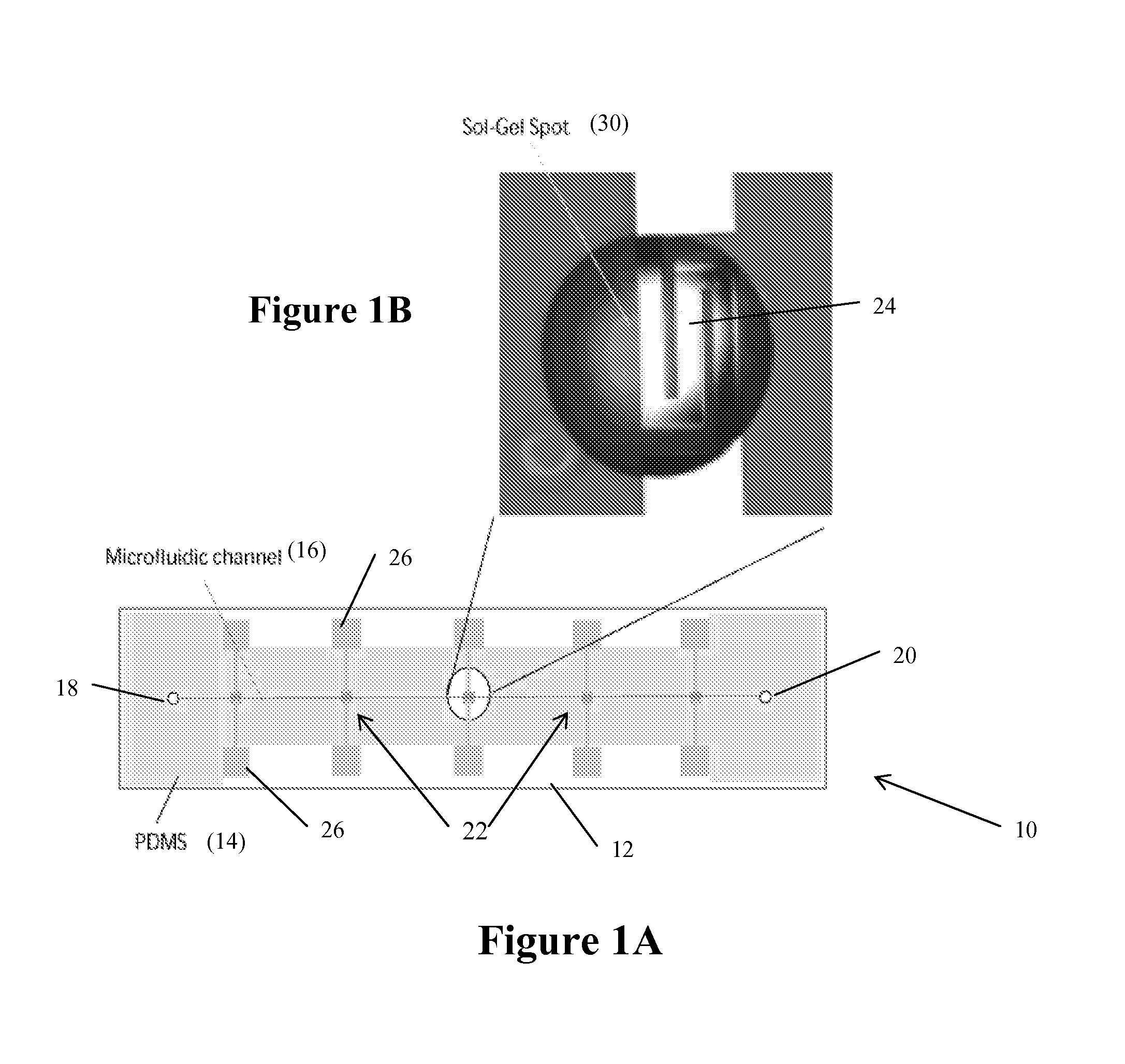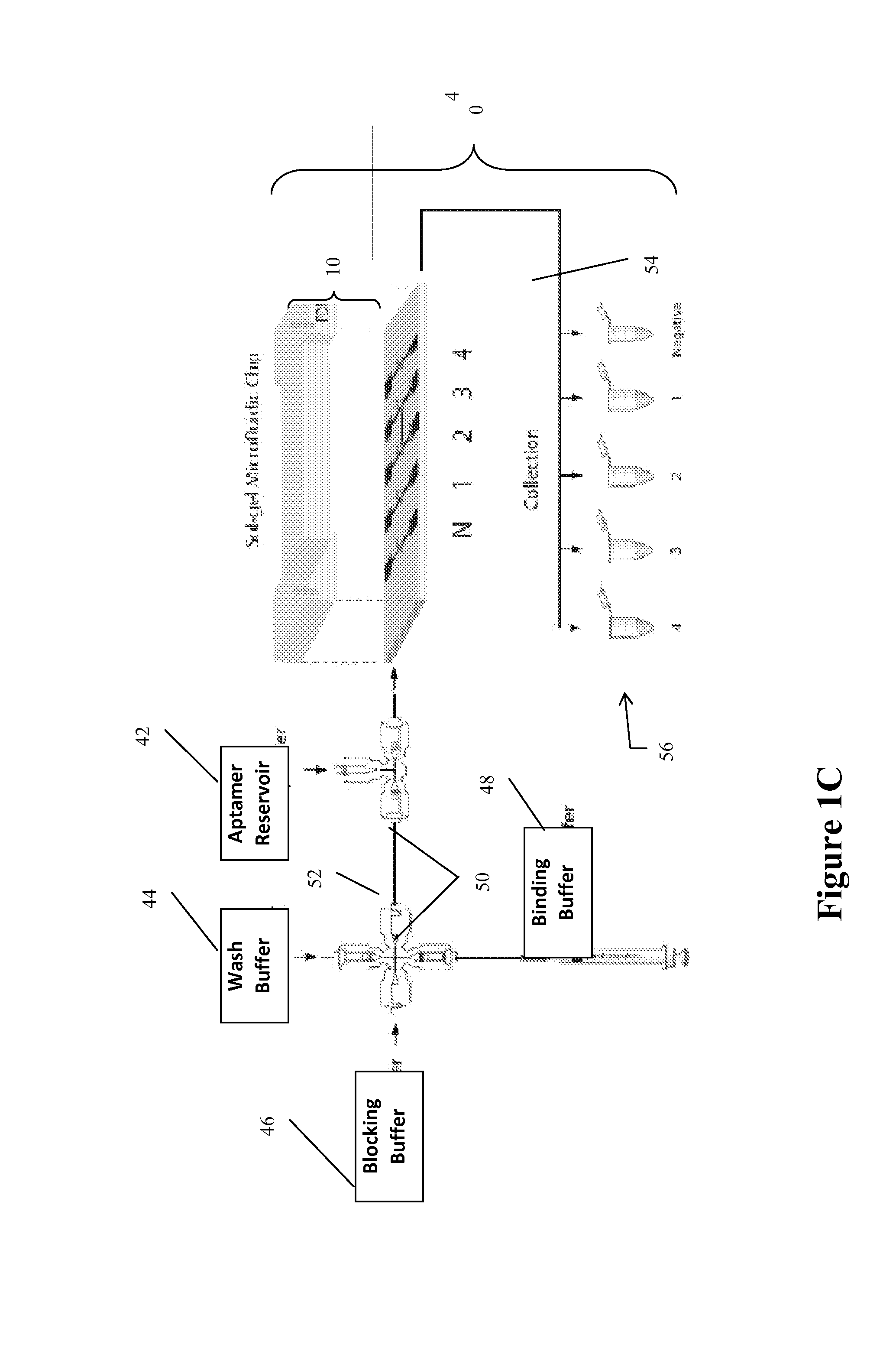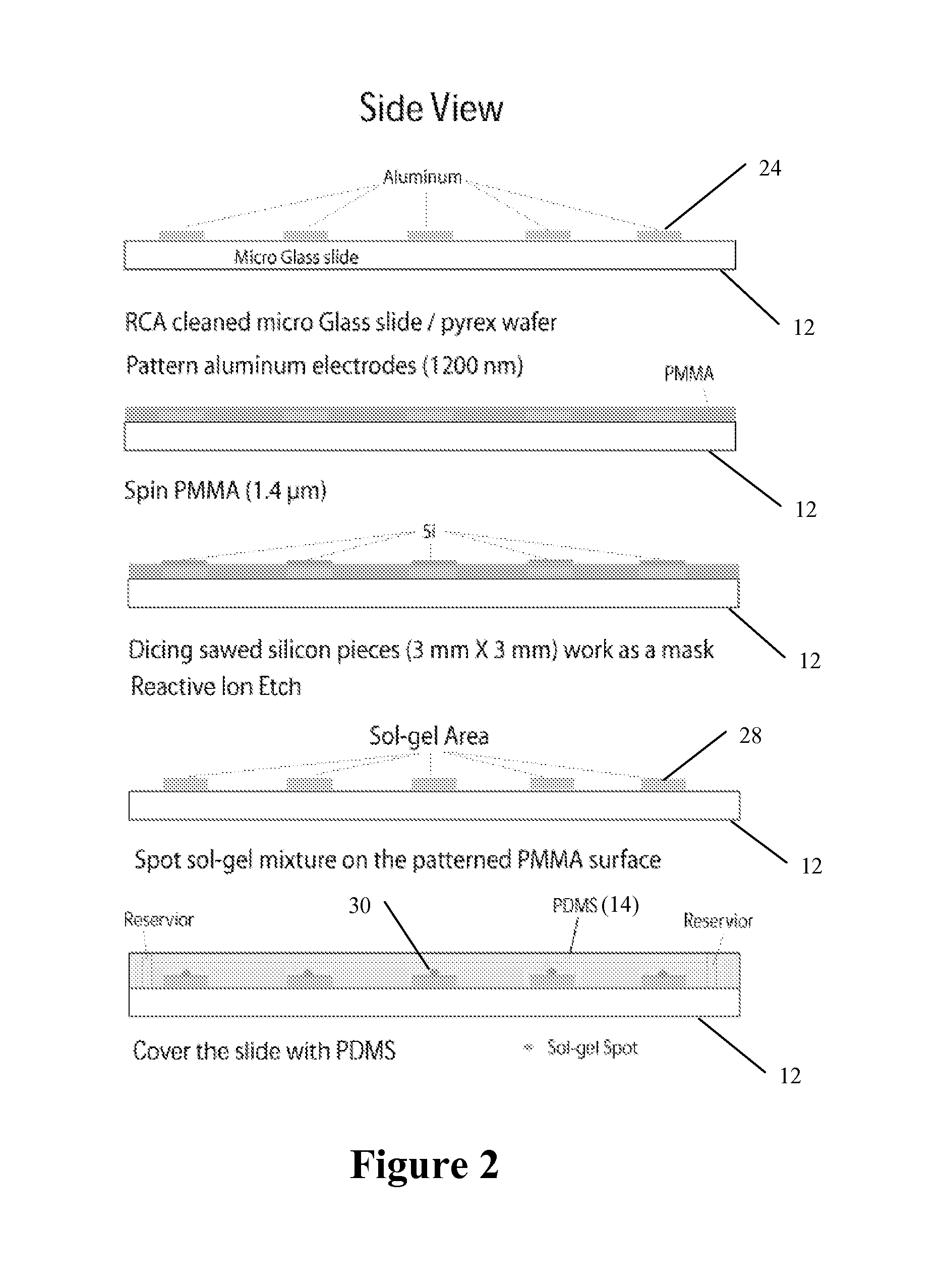Device for rapid identification of nucleic acids for binding to specific chemical targets
a nucleic acid and nucleic acid technology, applied in the direction of nucleotide libraries, directed macromolecular evolution, packaging, etc., can solve the problems of unsuitable high-throughput selection, repetitive selex system in practice, unsuitable for high-throughput selection, and relatively low throughput prohibit studies, etc., to improve the outcome of selex, improve the effect of selex, and increase the throughput speed and efficiency
- Summary
- Abstract
- Description
- Claims
- Application Information
AI Technical Summary
Benefits of technology
Problems solved by technology
Method used
Image
Examples
example 1
Fabrication of Microfluidic Device for SELEX-on-a-Chip
[0101]A microfluidic chip of the type illustrated in FIGS. 1A-B includes a PDMS (polydimethylsiloxane, Dow Corning, Mich.) lid with a microfluidic channel or chambers; and a glass or Pyrex slide with a set of aluminum electrodes. A Sylgard 184 kit provided a curing agent and a silicone elastomer base for manufacturing PDMS lids. A (1:10 w / w) ratio of curing agent to elastomer base yields good performance and elasticity of the PDMS lid. After mixing the curing agent and elastomer base and degassing the mixture, this mixture was poured against a premade SU-8 (SU-8 2075, Microchem) master. This SU-8 master was patterned on a 1 mm thick silicon wafer using standard optical lithography. The microfluidic parts embossed on the PDMS lid were 170 μm deep and 300 μm wide microchannels and five hexagonal chambers or wells with a side length of 1 mm. The thickness of the PDMS lid was about 5 mm (see FIG. 3B).
[0102]Aluminum was selected as a ...
example 2
Heater Electrode Design and Characterization
[0111]Sets of five heater electrodes were integrated into the microfluidic chip as described above. These electrodes contained two pad areas for probe station use and a narrow resistor area for generating heat. The total resistance of the electrode was about 2<5Ω depending on its thickness. To characterize the heater electrode, sol-gels containing TBP and TATA DNA with a known melting temperature of 81.5° C. were heated under varying conditions. The yeast TATA binding protein (TBP) and the TATA DNA region as a protein-aptamer pair was used, because TBP is a well-defined test system. TBP recognizes the most important eukaryotic core promoter motifs, the TATA element. TBP is mandatory for transcription by all RNA polymerases in yeast. TBP and intercalating SYBR Green™ (Invitrogen, Molecular Probes) dye labeled TATA DNA were incorporated into a mixture while the sol-gels were in preparation. The TATA DNA melting temperature was determined usi...
example 3
Visualization of the Interaction Immobilized Proteins and Nucleic Acid
[0113]Sol-gels with TBP were enclosed with the PDMS lid. After encapsulation, the channels were washed extensively with the PBS buffer (binding buffer) by connecting one end of the main channel to a syringe pump (Pump 11, Harvard Apparatus, Holliston, Mass.). Following the pre-washing step, the silicate gel spot was blocked for 1 hour with 1× binding buffer that contained 25 mM Tris-Cl (pH 8), 100 mM NaCl, 25 mM KCl and 10 mM MgCl2 with 5% skim milk. The blocking buffer works as a nonspecific competitor in the reaction mixture, which helps to achieve the selection of high-affinity molecules. Then synthetic complementary TATA DNA, with nucleic acid sequences of 5′-Cy3-GGGAA TTCGG GCTAT AAAAG GGGGA TCCGG-3′ (SEQ ID NO: 1) and 5′-CCGGA TCCCC CTTTT ATAGC CCGAA TTCCC-3′ (200 pmole) (SEQ ID NO: 2), were mixed in annealing buffer (20 mM Tris-Cl (pH 7.5), 10 mM MgCl2, and 50 mM NaCl), with the final volume, 50 μl, incubat...
PUM
| Property | Measurement | Unit |
|---|---|---|
| diameter | aaaaa | aaaaa |
| distance | aaaaa | aaaaa |
| side length | aaaaa | aaaaa |
Abstract
Description
Claims
Application Information
 Login to View More
Login to View More - R&D
- Intellectual Property
- Life Sciences
- Materials
- Tech Scout
- Unparalleled Data Quality
- Higher Quality Content
- 60% Fewer Hallucinations
Browse by: Latest US Patents, China's latest patents, Technical Efficacy Thesaurus, Application Domain, Technology Topic, Popular Technical Reports.
© 2025 PatSnap. All rights reserved.Legal|Privacy policy|Modern Slavery Act Transparency Statement|Sitemap|About US| Contact US: help@patsnap.com



